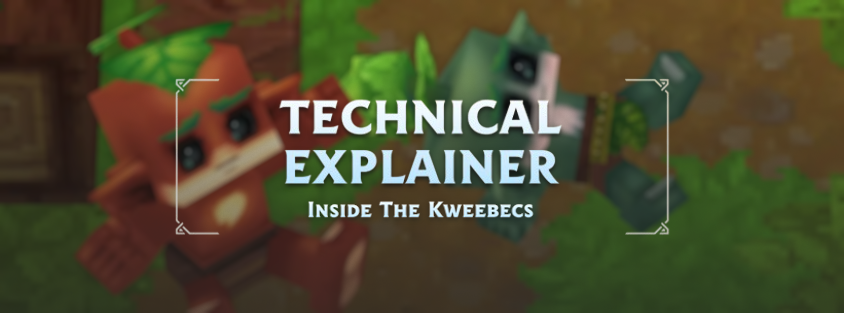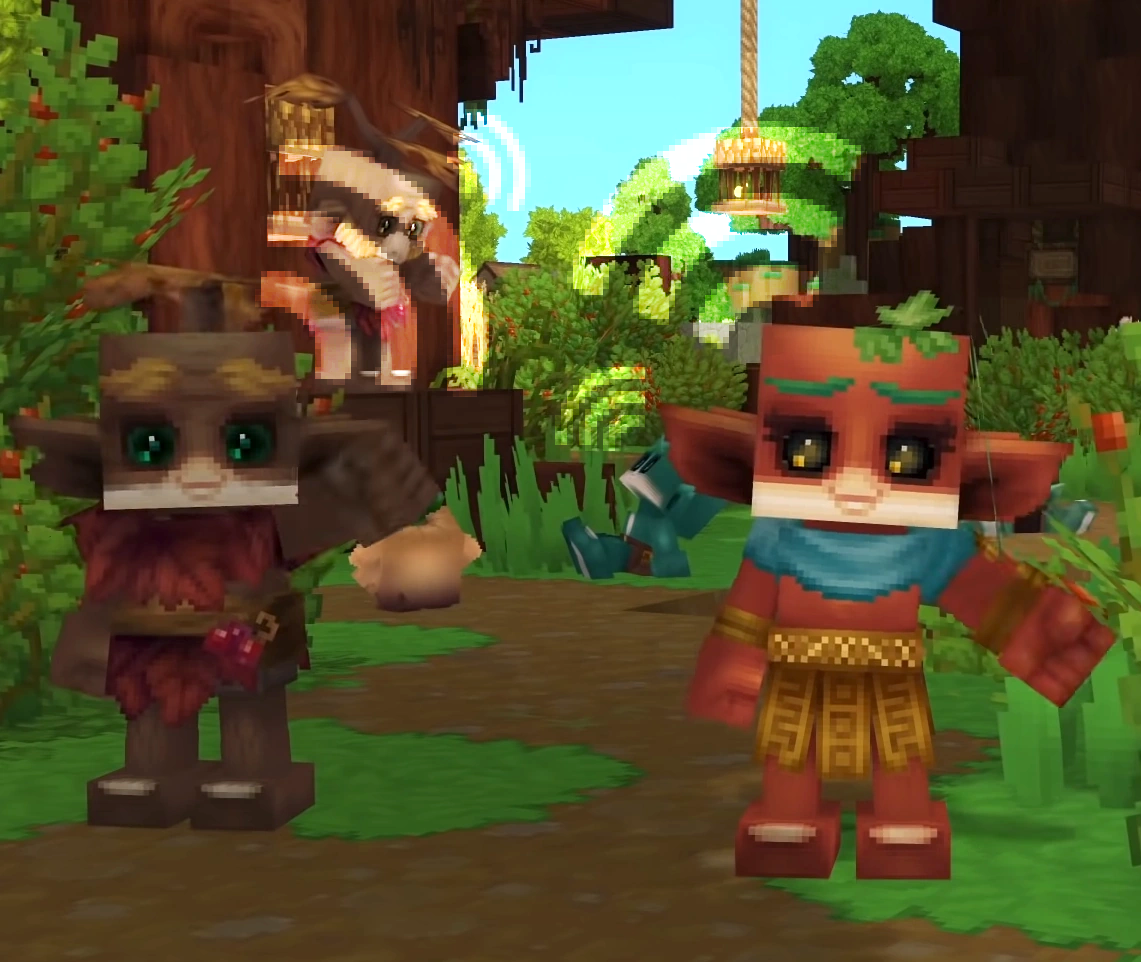Technical Explainer: Inside The Kweebecs

Hi everyone! For our third Technical Explainer, we’re going to take a peek at the magic behind everyone's favorite woodland creatures: the Kweebecs!

In our last blog post, we took a closer look at the Kweebecs, the beloved little woodland creatures of Orbis. These sprightly beings have a biological complexity that raises some serious questions. Do they breathe? Can they eat? And the one that has haunted the Hytale community for years: can you set them on fire? Strap in, because that’s exactly what we’re tackling in today's technical explainer!

The Structural Composition of Kweebecs
Kweebecs are essentially sentient foliage, made up of a fibrous network that’s equal parts plant matter and something… else. Their outer layer is a thick, bark-like epidermis that functions as both armor and insulation. Beneath that, a tangle of vine-like musculature allows them to scamper around the forests of Orbis. Their cells function through a hybrid system, merging photosynthesis with an internal digestive system, meaning they can survive both by soaking up sunlight and occasionally feasting on Trork remains for a quick snack.
Skeletal Framework
No bones, no problem! Instead of a traditional skeleton, Kweebecs rely on a system of hardened plant fibers that provide support while keeping them limber enough to dodge whatever eldritch horror Orbis throws their way.
Mature Kweebecs are especially flexible, able to twist and bend in ways that would make a contortionist jealous. Over time, this framework toughens up, and old Treesingers eventually plant themselves permanently, turning into the wise, immobile Elders (which is arguably both poetic and kind of tragic).
Core Sap Circulation System
Rather than blood, Kweebecs run on sap—a thick, nutrient-rich fluid pumped by an internal organ called the "Heartwood." This keeps them hydrated, fueled, and, most importantly, alive. If a Kweebec is injured, their sap coagulates quickly, allowing for rapid healing (unless, of course, the injury involves a certain element… but we’ll get to that).

A diagram of a Kweebec's internals
Photosynthetic Lungs
Kweebecs lack traditional lungs, instead relying on a network of pulsating, vein-like vines that writhe just beneath their bark-like skin. These appendages stretch outward, expanding and contracting as they leech nutrients from the air, writhing like exposed nerves seeking sustenance. When they breathe, it's an unsettling, rasping sound, as if the trees themselves were whispering secrets best left unheard.
The process sustains them effortlessly, allowing their bodies to function with minimal, involuntary spasms as they soak in the sun’s energy.

Root-Like Digestive System
Their mouths, lined with jagged, chitinous plates, grind down whatever organic matter they can find—fallen leaves, rotting wood, and the carcasses of unfortunate creatures that wander too close to their village. A twisting, sinewy stomach churns and gurgles, breaking down the consumed matter in a process of digestion.
Rumors persist that Treesingers, their bodies gnarled with age, develop an insatiable craving for decomposition, eagerly seeking out the damp, festering remains of the forest...
Neural Network and Cognition
Instead of a brain, Kweebecs have a distributed neural network running through their wooden skulls. This allows them to think, feel, and, most importantly, collectively freak out when one of them gets hurt. It also means they communicate through a mix of biochemical signals and glowing pulses—kind of like nature’s Wi-Fi.

Kweebec wifi hotspot
Regenerative Properties
Got a Kweebec with a missing limb? No worries—they grow back! Their sap-based healing allows them to regenerate lost appendages over time. However, there is a major caveat: which brings us to the real question...
Can You Set a Kweebec on Fire?
Alright, let’s address the burning question (pun very much intended). Given that Kweebecs are, in essence, mobile kindling, you’d think they’d be highly flammable. And you’d be absolutely right.
Their bark-like exterior provides some resistance, but once their sap reaches a high enough temperature, it turns into a volatile, sticky accelerant—meaning that, unfortunately for them, once a Kweebec catches fire, it’s not just a little campfire moment. It’s a full-blown, running, screaming, “Oh no, oh no, oh no!” situation.

Conclusion
Kweebecs are a delightful contradiction: fragile yet resilient, peaceful yet incredibly flammable. Their biology is an intricate mix of plant and humanoid traits, giving them a unique place in Orbis’ ecosystem. They’re self-sustaining, photosynthesizing little forest dwellers who just want to live their best lives—preferably far away from open flames.
So, can you set a Kweebec on fire? Yes. Should you? Absolutely not. Unless you enjoy making an entire village of tree-children very, very upset.
---
Does this kind of technical content interest you? We're hiring! Check out our Careers page for job openings and application tips.











